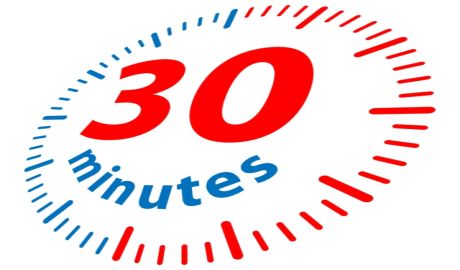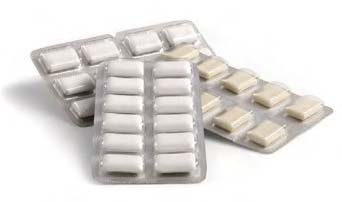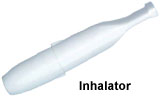Medication
Stop-smoking medication is recommended for all smokers who are dependent on nicotine (about 80% of smokers). You are likely to be addicted if you answer yes to any of the following:

- Do you smoke within 30 minutes of waking up?
- Do you smoke at least ten cigarettes a day?
- Do you get cravings or withdrawal symptoms when you try to quit?
The 3 types of medication available in Australia to help you quit smoking are:
- Nicotine replacement therapy (nicotine patches, mouth spray, lozenges, gum and inhalator)
- Varenicline tablets (Champix)
- Bupropion tablets (Zyban)
The choice of medication depends on your personal preferences, other health conditions, cost and previous experiences. Some people will respond to one medication and not the others, so if a treatment has worked previously without side-effects, it is usually the first choice if you need to try again.
Single medications, such as the nicotine patch, nicotine gum and bupropion alone approximately double a person’s chances of quitting successfully. A course of treatment is usually 8-12 weeks, but sometimes longer courses may be required.
All stop-smoking medications work by reducing cravings and withdrawal symptoms after you quit. Withdrawal symptoms may include irritability, frustration, feeling angry, sleep problems, depressed mood, feeling anxious, difficulty in concentrating and restlessness.
Nicotine Replacement Therapy (NRT)
NRT is the most common medication used by Australian smokers. It is available in 2 main forms:
- Long duration: nicotine patch
- Short acting:
- Fast onset: mouth spray
- Slow onset: lozenge, gum and inhalator
All nicotine replacement products release nicotine into the user’s bloodstream. They generally work more slowly than smoking, and the amount of nicotine in the bloodstream is less than that from smoking. That makes nicotine medications less addictive than cigarettes.
NRTs may be purchased over-the-counter, however nicotine patches are available on a doctor’s prescription. However, some nicotine patches are eligible for government subsidy and require a doctor’s prescription.
Nicotine is the main cause of addiction to smoking but otherwise has relatively few significant health effects. It is the other 7,000 other ingredients in tobacco smoke such as tars and carbon monoxide which cause disease.
Guidelines for using NRT
We recommend discussing your individual circumstances and requirements with your treating medical practitioner or pharmacist. However, some important general guideline are:
- Use sufficient nicotine. It is vital to take enough nicotine to relieve cravings and withdrawal symptoms
- Take the full course of NRT. A full course of NRT is at least 8-12 weeks.
- Start the nicotine patch 2 weeks before quitting. This is more effective than starting on quit day.
- Continue the patch after a lapse. Do not remove the patch if you have a slip-up as it helps prevent you from going back to regular smoking.
- Use quick-acting forms of NRT(mouth spray, lozenge, gum and inhalator) to treat cravings
- Use NRT correctly. Carefully follow the manufacturer’s instruction. Do not drink or eat immediately before and while using oral NRT.
The incorrect use of NRT makes it less effective and causes more side-effects. It is important to follow the instructions carefully (see below). as this reduces the absorption of nicotine in the mouth.
Combination therapy
Studies have found that the use of a combination NRT approach provides the best chance of successfully quitting. An example of this would be combining a nicotine patch for a steady, slow dose of nicotine with a quick-acting form of NRT (mouth spray, gum, lozenge or inhalator) for breakthrough cravings.
We recommend that you discuss potential combinations suitable for your needs with your treating medical practitioner or pharmacist.
Nicotine replacement products
Nicotine patches
 Nicotine patches are the most popular form of NRT. A patch is applied to the skin daily and delivers a steady dose of nicotine through the day.
Nicotine patches are the most popular form of NRT. A patch is applied to the skin daily and delivers a steady dose of nicotine through the day.
Nicotine absorption from the patch is slow and it takes several hours for the patch to have its full effect. Patches are not so helpful for immediate cravings so are usually combined with a faster acting form of NRT, such as the mouth spray, lozenge, gum or inhalator. Sometimes multiple patches are required to relieve cravings and withdrawal symptoms.
There are two types of nicotine patch. Twenty-four hour patches are usually applied on rising and removed the next morning. They help to protect against early morning cravings and may give better craving relief overall. They can be taken off at bedtime if sleep is disturbed. The 16-hour patch that is applied in the morning and removed at bedtime.
Smokers of 10 or more cigarettes per day normally start on a full strength patch (21mg for the 24 hour patches and 25mg for the 16 hour patches). Sometimes 2 or even 3 patches are required to relieve cravings or withdrawal symptoms.
Correct use of nicotine patches
Nicotine patches have been shown to work best if started 2 weeks before Quit Day. The patches are generally placed daily in the morning on the upper arm, chest or back, but can probably be applied anywhere if those locations are not convenient. Use a different location each day to avoid skin irritation.
Nicotine patches can be stopped abruptly or you can gradually taper the dose of nicotine over several weeks, by using weaker strength patches. There is no evidence that either method is better than the other.
Each product contains instructions on correct use. Make sure you read the instructions carefully before you start using the patches.
Remembering the patch every day
It can be easy to forget to put your patch on some days and this can make it less effective. Tips to help you remember include keeping your patches in your underwear drawer so you remember to put one on when you get dressed, and keeping one in your handbag, car or desk at work just in case. You could also set the alarm on you smartphone to remind you each morning.
Duration of use
Patches are generally used for 8-12 weeks. However, studies have shown that a 6 month course is more effective and this may be recommended for some people, especially those who are more addicted to nicotine or have a mental illness.
Long-term addiction to the nicotine patches is very uncommon. However, continuing to use nicotine patches is much safer than returning to smoking.
Side effects
Patches may cause a range of different side effects including skin irritation, redness, itch and rash. It is important to rotate the application site each day to reduce the risk of irritation.
Insomnia and vivid dreams can also occur, but tend to improve with time. However, if severe, you can remove the patch at bedtime or a couple of hours before retiring.
Other possible side effects of the nicotine patch include dizziness, racing heartbeat, headache, nausea, vomiting and muscle aches.
If you experience any side effects, consult your treating health practitioner immediately for advice.
Cost
With a doctor’s prescription, you can receive one 3-month course of subsidised patches per 12 month period. The cost is $6.40 per script for pensioners and Health Care card holders and $39.50 for others.
Patches may also be purchased over-the-counter, without a prescription, for the full retail price, which is still more cost-effective than smoking!
Nicotine Mouth Spray
 Nicotine from the mouth spray is sprayed directly into the mouth and is absorbed much more rapidly than other forms of NRT. It starts to relieve cravings after one minute and delivers its maximum effect in about 10 minutes. Read the instructions carefully prior to using NRT mouth spray.
Nicotine from the mouth spray is sprayed directly into the mouth and is absorbed much more rapidly than other forms of NRT. It starts to relieve cravings after one minute and delivers its maximum effect in about 10 minutes. Read the instructions carefully prior to using NRT mouth spray.
Duration of treatment
A course of 12 weeks is typically recommended. The number of sprays can be gradually reduced towards the end of treatment.
Side-effects
Side-effects from the mouth spray include irritation of the mouth and throat, increased saliva, nausea, dyspepsia, headache and hiccups. If you experience any side effects that concern you, consult your treating health practitioner immediately for advice.
Nicotine Lozenges
 Like the gum, nicotine lozenges are held in the mouth and release nicotine as they dissolve. Nicotine is absorbed through the lining of the mouth. The lozenges are more discreet than the gum and can be used inconspicuously in public.
Like the gum, nicotine lozenges are held in the mouth and release nicotine as they dissolve. Nicotine is absorbed through the lining of the mouth. The lozenges are more discreet than the gum and can be used inconspicuously in public.
The lozenge is available in 2 strengths, 2mg and 4mg. There is also a mini-lozenge, which is available in 1.5mg and 4mg strengths.
Read the instructions carefully before using nicotine lozenges.
Duration of treatment
Typically, a 12 week course is recommended.
Side-effects
Lozenges can cause nausea, hiccups, heartburn and flatulence if sucked too quickly or swallowed. Try to make them last longer if this is occurring. Other side-effects include insomnia, dizziness, headache, cough, sore throat. If you experience any side effects that concern you, consult your treating health practitioner for advice.
Nicotine gum
 Nicotine gum delivers nicotine to the mouth where it is absorbed into the body through the lining of the cheek.
Nicotine gum delivers nicotine to the mouth where it is absorbed into the body through the lining of the cheek.
Nicotine lozenges are available in two strengths: 2mg and 4mg.
Read the instructions carefully prior to using nicotine gum.
Duration of treatment
Generally, full course of treatment is 12 weeks. Tapering the amount of gum chewed helps users to stop using it.
Side-effects
Hiccups and nausea can occur if the gum is chewed too rapidly and excessive nicotine is swallowed. Vigorous chewing can also cause jaw discomfort. Some other possible side-effects of the gum include bad taste, throat irritation and a racing heartbeat. Nicotine gum also sticks to dentures and is not suitable for denture wearers. If you experience any side effects that concern you, consult your treating health practitioner for advice.
Nicotine Inhalator
 The nicotine inhalator is a hollow plastic tube with a replaceable nicotine cartridge inside. It is good for people who like to handle a cigarette. When you puff on the inhalator, a nicotine vapour (flavoured with menthol) goes into your mouth and is absorbed through the lining of the mouth. Read the instructions carefully prior to using a nicotine inhalator.
The nicotine inhalator is a hollow plastic tube with a replaceable nicotine cartridge inside. It is good for people who like to handle a cigarette. When you puff on the inhalator, a nicotine vapour (flavoured with menthol) goes into your mouth and is absorbed through the lining of the mouth. Read the instructions carefully prior to using a nicotine inhalator.
Duration of treatment
A 12-week treatment course is recommended. The number of puffs can be gradually reduced towards the end of treatment.
Side-effects
Side-effects include cough, irritation of mouth and throat, abdominal discomfort, nausea, hiccups and vomiting. If you experience any side effects that concern you, consult your treating health practitioner for advice.
Varenicline
Varenicline (Champix) is a medication specifically designed to help smokers quit. Varenicline triples the chance of quitting successfully compared to sugar pills.
Varenicline works in the brain by reducing cravings and withdrawal symptoms after quitting. It also reduces the enjoyment of a cigarette if you are tempted to smoke. It is not addictive or habit forming.
Varenicline is only available on a prescription from your doctor. It is not suitable for everyone and may be associated with strong side effects in a small number of people. Consult your treating medical practitioner about the suitability of this product for you.
Varenicline is available by prescription on the Pharmaceutical Benefits Scheme at a subsidised rate. The cost for pensioners and Health Care Card Holders is $6.40 per month and $39.50 for others.
Bupropion
Bupropion (Zyban) has been found to be effective in helping smokers quit. Like the other stop-smoking medication, it relieves cravings and withdrawal symptoms and approximately doubles quit rates. It is not suitable for everyone and may be associated with strong side effects in a small number of people. Consult your treating medical practitioner about the suitability of this product for you.
Bupropion works in the brain to increase hormone levels in the reward centre. It is not addictive or habit forming. It is only available on a prescription from your doctor.
Availability and cost
Bupropion is available by prescription on the Pharmaceutical Benefits Scheme at a subsidised rate. The cost for pensioners and Health Care Card Holders is $6.40 per month and $39.50 for others. You can only get one subsidised course in a 12-month period.